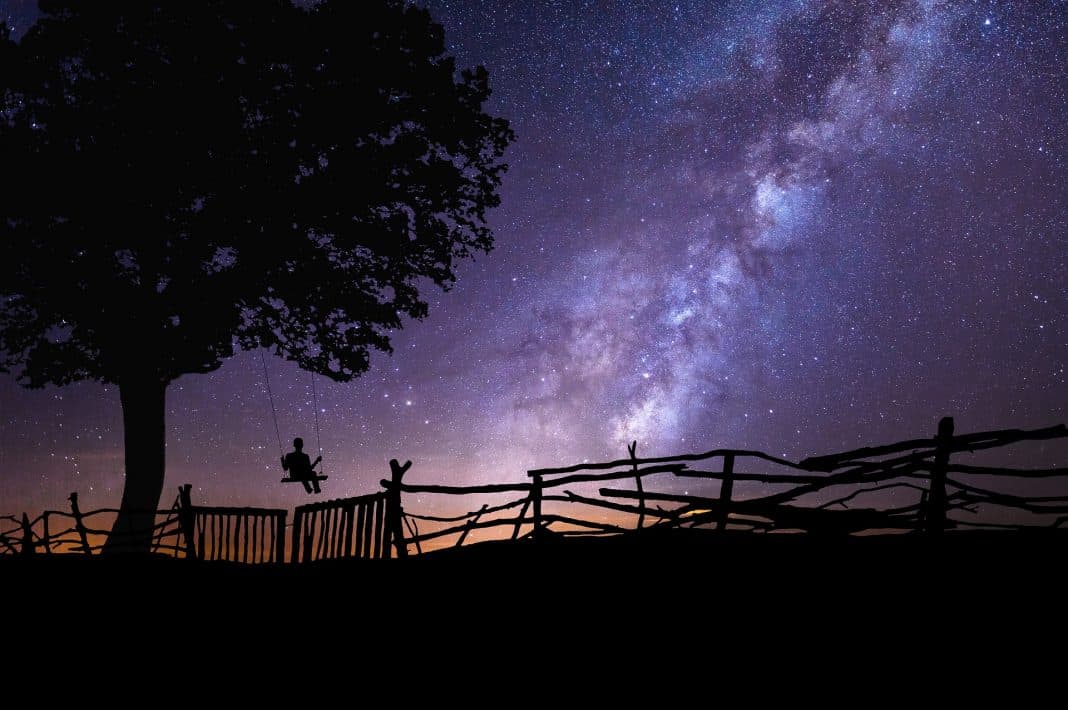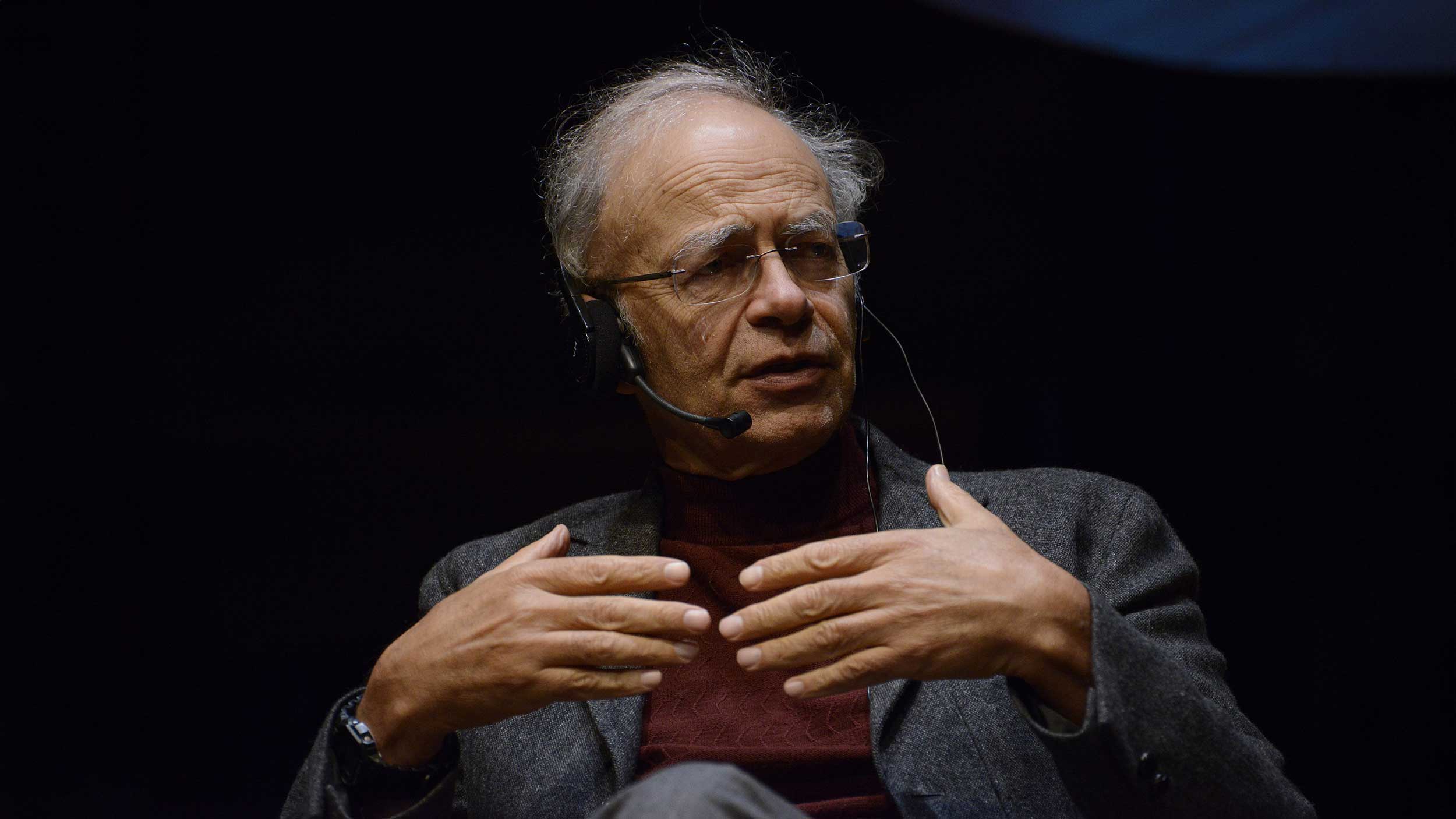Trying to imagine the beginning of time is just as hard as trying to imagine that time has no beginning. Both possibilities are equally strange and have baffled scholarly minds for centuries. Significant progress in answering this convoluted question was made a little less than 100 years ago when experimental science moved closer to clearing up a seemingly unsolvable problem.
How far away are the stars?
The first major discovery that completely changed our image of the universe was made during the interwar years. This was when American astronomer Edwin Hubble first measured the distance between neighbouring galaxies and ours, and also established the speed at which those galaxies are moving in relation to the Earth. One of the most exciting findings that resulted from these measurements was a fairly exact idea of the universe’s age – or the age of time itself.
One of the first problems that Hubble encountered was the problem of measuring the distance between galaxies. His only option was to compare the brightness of stars in different galaxies. Suppose we turn on a number of identical light bulbs placed at various distances from the point at which we observe them: in complete darkness, we can tell that the bulbs which seem brighter are closer to us than those which seem dimmer. But unfortunately, stars aren’t equally bright, and thus can’t easily be compared.
Lighthouses in the sky
Hubble wouldn’t have been able to work out the distance between galaxies if it wasn’t for the discovery of a special type of star called a Cepheid. The brightness of Cepheids periodically fluctuates every few days. Cepheids are like lighthouses in the sky that turn on and off, with one very important peculiar feature: the frequency with which they turn on and off depends directly on how bright they are when they shine at maximum brightness.
To return to our light bulb analogy, these pulsating stars are similar to light bulbs switching on and off periodically according to their respective wattage or power. A 60W light bulb would thus shine for a different length of time before dimming than a 100W bulb would. By observing the variation of an individual light, we would be able to tell the power of the bulb emitting it. A fairly simple calculation will then tell us how far the light has travelled to reach us.
Using the then largest telescope in the world, Hubble was able to locate these variable stars in nearby galaxies by directly comparing them to equally bright stars in our galaxy. That enabled him to establish the distance between neighbouring galaxies and ours. It was a very significant measurement at the time because it ended a long debate over whether our galaxy was the only one in the universe and whether the “nebulae” that had been spotted with telescopes truly are other galaxies similar to ours. By measuring the distance to the Andromeda galaxy in 1924, where he first noticed variable stars, Hubble clearly demonstrated that it was much further away than any star in our galaxy.
How do you measure the speed of a galaxy?
Everyone has heard the sound of a siren on a speeding emergency vehicle. Its pitch becomes higher when the vehicle gets closer. The change of the siren’s pitch is most apparent at the moment when the car passes us, suddenly dropping from high to low.
There is nothing extraordinary about this phenomenon. Sound is nothing more than a vibration of air and if the sound source is in motion, the sound waves in front of it are denser. The vehicle trying to catch up with its sound waves is what we hear as the higher pitch of the siren. Following the same logic, the sound waves behind the vehicle thin out. The car is moving away from them, leaving them behind, and what we hear in consequence is a lowering of pitch.
A similar phenomenon can be observed with a speeding source of light. If an ordinary white light bulb were moving fast away from us, we would see it as red. Like the sound of the siren, the movement of the light source changes the wavelength of the light. We notice this change as a shift in colour. Because a white light turns red when moving away with great speed, scientists named this phenomenon the redshift.
The universe is inflating
Hubble used the idea of redshift in observing the light from far-away galaxies. When he compared his measurements of distance and the speed of the galaxies, he was surprised to find an obvious connection between the two sets of numbers. The further away the galaxy, the faster it was retreating.
This finding, today known as Hubble’s law, transformed our ideas about the universe. The universe isn’t fixed – it’s inflating. Galaxies are moving away from one other, which means that they used to be closer together. Because we know how fast they are moving away, we are able to calculate when they were closest. We are able to estimate when the universe started to inflate or to put it simply: we can calculate the age of the universe.
Hubble’s law was the first law in physics that could be used to determine the exact age of the universe. It can be said without exaggeration that with this law cosmology became an empirical science, proposing measurable hypotheses. Today, however, we have another important source of information which enables us to determine the age of the universe with even greater precision.
The Nobel Prize-winning antenna noise
In the 1960s American astronomers Arno Penzias and Robert Wilson from Bell Labs tried to put up a sensitive antenna specially developed for satellite communication. In the course of their work they became increasingly frustrated with an unusual noise that emerged with each measurement. Fearing that the antenna was malfunctioning, they systematically checked all of its parts. They even climbed up into the antenna and cleaned away pigeon droppings which had collected on it. But despite all their efforts, they weren’t able to locate the source of the noise. The noise itself was constant: it remained unchanging regardless of the direction the antenna was facing, a fact which suggested the noise was coming from more than one source. Embarrassed at not being able to identify the disturbance, they barely mentioned the problem in their scientific report.
But fortunately they did at least acknowledge the problem, for it was to bring them a Nobel Prize in 1978. The noise turned out to be signals left over from an early stage in the evolution of the universe. Radiation emitted shortly after the beginning of the universe had been travelling across interstellar space for billions of years – and it was caught by Penzias and Wilson’s antenna. This radiation was the most ancient light travelling across space. It was produced a few hundred thousand years after the Big Bang, when the heat of the new universe cooled down enough for light to move freely. Before this time the universe was immersed in a sort of fog: the light was blocked as it collided with the atoms that made up the fog.
What do we know about the universe?
Today scientists record the primordial radiation of space, or the “noise” discovered by Penzias and Wilson, through satellites orbiting the Earth. They look out for tiny differences in radiation emitted from different regions of space. From these tiny variations in the temperatures of primordial radiation we are able to learn many things about the universe as a whole. Penzias and Wilson received a Nobel Prize in 1978; John C. Mather and George F. Smoot shared the prize in 2006 for building on the discovery of ‘Background’ Radiation. Various theoretical models describing the evolution of the universe predict a number of variations in the temperature of primordial radiation. By applying exact measurements to this deep space radiation, astronomers can determine which models give the best match for actual observations.
According to the model of space-evolution that matches the various measurements most closely, the universe is 13.8 billion years old. Ordinary matter in the form of atoms, which comprise the substances our bodies are made from along with the stars and the planets, takes up only 5% of the entire universe. 27% of it is “dark matter” and 68% is mysterious “dark energy”. The exact content of dark matter and dark energy, which together form 95% of the universe, remains largely unknown.







[…] This is to say that we are a young civilisation; Human evolution is the lengthy process of change by which people originated from apelike ancestors. Scientific evidence shows that the physical and behavioural traits shared by all people originated from apelike ancestors and evolved over a period of approximately six million years. (https://humanorigins.si.edu/education/introduction-human-evolution) The Lambda-CDM concordance model describes the evolution of the universe from a very uniform, hot, dense primordial state to its present state over a span of about 13.8 billion years of cosmological time. (https://sci-highs.com/how-old-is-time/) […]